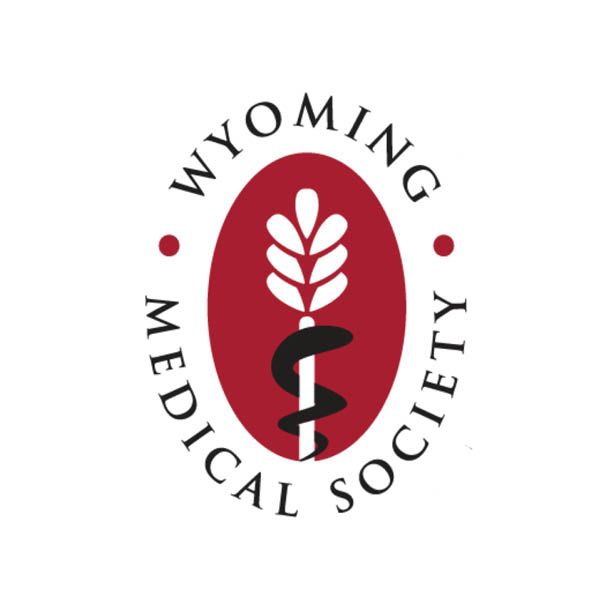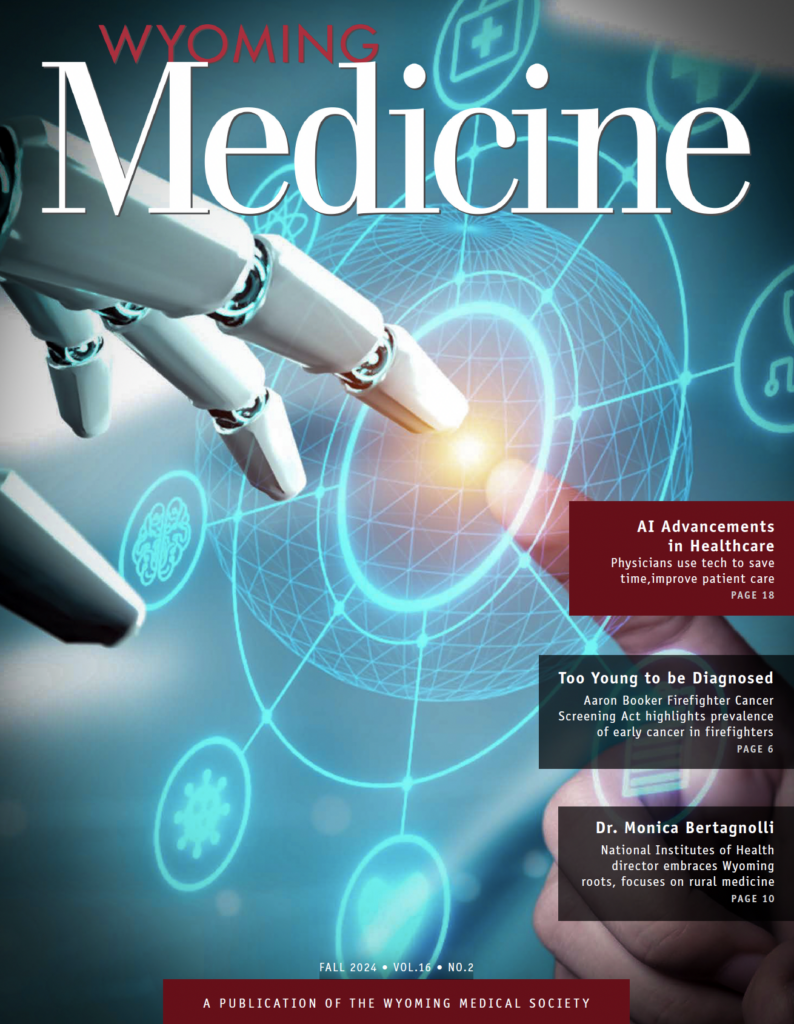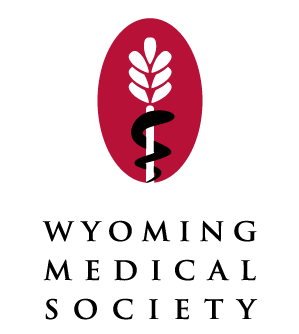
What U.S. Healthcare Will Look Like In 2033
Executive Summary
Richard E. Anderson, MD, FACP, Chairman and Chief Executive Officer, The Doctors Company and TDC Group
American healthcare faces persistent issues with consolidation, workforce shortages, integration of new technologies, and unrelenting economic pressure. In 2023, technologies such as clinical decision support (CDS) and other artificial intelligence (AI) tools have continued to emerge, offering both promise and risk. Meanwhile, even as long-standing care and business models are upended, the ripple effects of COVID-19 continue. Physician shortages are growing, especially in primary care, though advanced practice clinicians (APCs) are filling many of the gaps.
Healthcare organizations are looking to their vast wealth of data for insights that can be harnessed to improve care for patients, promote professional satisfaction for clinicians, mitigate liability, and streamline medical practice.
Each year, TDC Group looks ahead to healthcare trends over the next decade, focusing on challenges, key lessons, and emerging risks. We remain committed to serving those who provide care by delivering insights into healthcare’s evolution to help guide the actions of medical leaders making critical decisions. This examination, though certainly not exhaustive, lays out some of the most pressing issues medical professionals must address as we look ahead. Our 2022 analysis examined the impacts of the pandemic, health equity challenges, and healthcare costs on the changing landscape.
What Will Healthcare Look Like in a Decade?
Here are TDC's 2023 predictions for how U.S. healthcare will change over the next 10 years:
Prediction One: The shadow of the pandemic will still fall over healthcare, as physicians face continuing pandemic-related lawsuits, unanswered questions around care for long COVID patients, and delayed diagnoses stemming from COVID-19 disruptions.
New research suggests that health risks can persist at least two years after COVID-19. For a large swath of long COVID sufferers, regular appointments with one or more specialists like pulmonologists, respiratory therapists, endocrinologists, cardiologists, urologists, and gastroenterologists is an inevitability. There are still many unanswered questions around long COVID, not only in terms of its symptoms and treatment, but also in terms of liability for physicians.
During the pandemic, shield laws enacted by many states created qualified immunities from certain types of liability. These protected medical professionals against medical malpractice claims relating to the prevention and treatment of acute COVID-19, but those same protections may not exist for those treating patients with long COVID. Among other complicating factors, says Peter Kolbert, JD, Senior Vice President for Claim and Litigation Services for Healthcare Risk Advisors (HRA), part of TDC Group, long COVID is still something of a “diagnosis of exclusion.” Therefore, the strength of relationships and clear communication between physicians and patients are crucial. In malpractice claims involving COVID-19, “the very first piece of evidence is the medical record,” which becomes a time capsule, containing efforts to rule in, rule out, and follow up.
“There is still a lack of full societal acceptance of long COVID,” Mr. Kolbert says. “But claims alleging delay in the treatment or recognition of long COVID are starting to trickle in.”
Prediction Two: Healthcare consolidation will continue unabated and continue to be a driver of increasing healthcare costs.
Healthcare consolidation is often promoted for its ability to access economies of scale and cost reductions, but this benefit rarely reaches patients. A recent study from JAMA found that consolidation among physicians produced medical charges that were 12 to 26 percent higher than they had been before consolidation. And for hospitals, the average increase in pricing was about 31 percent.
“The study showed some positive quality differentials were achieved, but they were quite small,” says Richard E. Anderson, MD, FACP, Chairman and Chief Executive Officer of The Doctors Company and TDC Group. “Consolidation is not providing the level of improvement that we’d hoped.”
At the same time, tech giants and private equity funds—who secure distressed specialty practices—have continued to tighten their grip on the U.S. healthcare market. According to the American Hospital Association’s Health Care Disruption 2023 Outlook, nontraditional providers will capture one-third of the healthcare market by 2030.
“The venture capital model is, ‘Buy it, increase profitability, and sell it in three to five years,’” Dr. Anderson explains. “That’s a very disruptive model for healthcare. When I say disruptive, I don’t mean disruptive innovation. I mean it can disrupt the continuity of care in a profound way.”
From 2014 to 2021, the volume of private-equity and venture-capital deals in healthcare grew at a 29 percent annualized rate—compared to only about 2 percent overall. In 2022, healthcare merger and acquisition revenues totaled a record-breaking $45 billion, and the pace of such transactions was picking up; the pace stayed strong through the first half of 2023.
Prediction Three: Nuclear malpractice verdicts—driven by social inflation—will continue to push insurance rates and healthcare costs higher.
A notable difference between the U.S. and similar countries is the rising cost of malpractice litigation. Numerous factors contribute, including the consolidation of healthcare, which creates large corporate healthcare systems that make attractive targets to plaintiffs’ attorneys, hold little appeal for juries sympathetic to injured patients, and often wish to avoid the uncertainty of extended litigation, which may incline them to settle. Social media and nuclear verdicts remain powerful influences.
Healthcare practices and institutions, as business organizations, are affected by the same economic forces that impact the communities and business climates in which they operate. Social inflation, which occurs when an insurer’s average claim amount grows faster than the overall inflation rate, has reshaped numerous markets, but its effect on healthcare has been outsized.
“People are, understandably, sympathetic to injured patients,” says Robert E. White, Jr., President of TDC Group. “Jurors can also form emotional bonds with credible, empathetic medical professionals, but it’s harder to be sympathetic to a hospital—if jurors perceive a healthcare organization as a faceless but deep-pocketed entity, then an enormous award may be easier for the plaintiff’s attorney to inspire.”
Over the decade ending in 2021, social inflation has increased losses incurred by physician-focused insurers by between $2.4 and $3.5 billion—8 to 11 percent. By creating pressure to increase insurance premiums, social inflation increases healthcare costs and can make care less accessible.
From 2013 through 2018, liability premiums were relatively stable. In 2019, a rapid uptick began, culminating in roughly 30 percent of policyholders nationwide experiencing an increase in their medical malpractice premiums in 2022. These increases are not due to social inflation alone, but they are connected.
“As these cost trends continue, medical professional liability carriers will have to increase their rates to keep up with the losses,” Mr. White says. “Therefore, although social inflation hits insurers first, it ultimately affects practices’ premiums.”
In this short video, Mr. White explains more about social inflation.
Prediction Four: Patient use of retail healthcare clinics like CVS will increase—forcing a serious re-examination of “patient-centered care.”
For a patient’s routine care needs, traditional practices are now competing with the ease of access that large retail pharmacies like CVS provided during the pandemic. Retail healthcare clinics can often offer appointments sooner than traditional physician practices, making them appealing to patients who want or need rapid help with medical concerns. Retail clinic billing volumes are up 200 percent since 2017, outpacing urgent care centers, emergency departments, and physicians’ offices. This means that retail medicine providers like pharmacy clinics present business competition to traditional practices.
“During the pandemic, millions and millions of patients started to use retail clinics for the first time, because they could get their immunizations there,” Dr. Anderson says. “In today’s society, where 24/7 service is available for virtually anything and there are many metrics for the quality of the service, people know what good customer service looks like. Despite two decades promoting patient-centered care, access to prompt convenient care has not generally improved among traditional providers.”
Patients can book their retail healthcare clinic appointments using a customized app. The patient encounter begins long before the visit and continues after through communications regarding testing and follow-up.
Faced with the ease of access provided by retail medicine, traditional healthcare practices are expanding their focus beyond the point of care, pushed to rethink the patient’s entire journey. However, practices face obligations that retail medicine providers do not.
“Retail companies can make profits by driving traffic to their stores, with medical care serving as a loss leader,” Dr. Anderson says. “Retail medicine is going to harvest the low-hanging fruit in American healthcare with routine things like school physicals, immunizations, and prescription pick-up. And they’re doing this unencumbered by any responsibility for the overall healthcare system.”
Prediction Five: APCs and alternative models of care will be two keys to alleviating the primary care and elder care crisis.
The Association of American Medical Colleges predicts that demand for medical services in the U.S. will grow much faster than physician supply, leading to an estimated physician shortage of between 54,100 and 139,000 by 2033. In primary care, specifically, relief is coming for overburdened physicians, as APCs, including nurse practitioners (NPs) and physician assistants (PAs), are among the fastest growing professions. Through 2030, strategic studies show that the total of practicing physicians is projected to grow at a compound annual growth rate (CAGR) of less than 1 percent, vs. 6.8 percent and 4.3 percent for NPs and PAs respectively.
“Increasingly, APCs will become accessible care providers for many Americans seeking routine and preventative care, as well as entry into traditional care delivery,” says Laura Kline, MBA, CPCU, Senior Vice President of Business Development, The Doctors Company, part of TDC Group.
Leaders in primary care emphasize the importance of role definition, so physicians and APCs can collaborate effectively within state-based scope-of-practice limitations. This will broaden access to care while helping team members practice at the tops of their licenses.
According to census estimates, by 2050, the population of Americans 65 and older is projected to increase by more than 50 percent. More of this population is choosing to age at home, creating a need not only to develop a care model but also to work with patients to modify their environments to support that choice. “Nurse practitioners are providing much-needed in-home care and community-based options for elder care,” says Paul Romano, President of TDC Specialty Underwriters, part of TDC Group. “These models are alternatives to healthcare’s traditional heavy reliance on the current institutional model and focus not only on caring for a patient’s health but ensuring they can manage and even thrive in their home environment.”
Outpatient primary care models can reduce cost and suffering. This approach is growing, with “hospital at home” programs offering inpatient-style care for serious health issues at home.
“The expansion of care in home settings will continue as more routine procedures are approved for outpatient care settings,” Mr. Romano says. “With better reimbursement rates, lower costs, quicker recovery times, and a better overall patient experience, more care will be administered this way. The role of APCs will continue to expand to handle this shift of exposure to outpatient settings.”
In a time of worsening physician shortages, new approaches to primary care, home care, and elder care are essential. Thoughtful structuring of care teams can assist many specialties in maintaining or expanding access to care while containing costs, relieving burdens for physicians, and continuing to provide high-quality and attentive care.
Hear more from Ms. Kline about the growth of the APC profession in this short video.
Prediction Six: AI-powered clinical decision support tools will help reduce administrative burdens to free up more time for patient care—but present new risks in the process.
For physicians in fields requiring the interpretation and assimilation of vast amounts of data, AI has become a critical technological tool—albeit one that is still in its earliest stages. Many healthcare practitioners say they welcome AI-powered assistance in lifting administrative burdens, but few healthcare systems have developed a plan for using AI tools in scheduling and billing—much less for diagnosis or other phases of patient care.
AI-powered CDS tools have shown promise for analyzing images (e.g., masses, skin lesions, or moles) to augment clinicians’ judgment in separating what is normal from what is cause for concern. Radiologists have led the way in seeking workflows by which AI-powered tools could reliably enhance detection and decision-making—as opposed to bogging down in false alarms or otherwise creating as many burdens as they relieve, as often happens with new technology.
AI-powered tools are being implemented in more medical specialties, and they are being deployed to provide administrative support that allows medical professionals to focus directly on patients.
Medicine is seeing an increase among prospective research studies examining a variety of AI-powered CDS tools in practice, evaluating their ability to provide evidence-based recommendations for diagnosis and treatment, improving care quality, and reducing adverse events.
“Even when using valid clinical decision support tools, medical professionals must apply critical thinking, clinical judgment, and additional diagnostic testing as needed to validate CDS recommendations,” Mr. Kolbert says. For instance, though an algorithm anticipates a patient’s active myocardial infarction, the emergency department physician must still secure additional evidence or confirming test results prior to sending the patient for stenting or an angioplasty—or risk a subsequent medical malpractice claim of misdiagnosis if the procedures were unnecessary. Even as CDS can streamline clinicians’ workflows, it does present additional patient safety and litigation risks, if not applied with caution and in the context of documented clinical judgment and physical findings.
"Medical record documentation of human judgment in response to AI guidance will be essential to patient safety and mitigating the risks of allegations of negligence,” Mr. Kolbert says.
Prediction Seven: AI tools will “listen” to patient-clinician interactions to reduce the burden of documentation—a top driver of clinician burnout.
The recording of physician-patient interactions via natural language processing (NLP) shows promise in freeing clinicians from EHR documentation to focus on patients, not computer screens. A recent study found that physicians spent more than 16 minutes per outpatient encounter using EHRs, with chart review, documentation, and ordering accounting for most of that time. These ambient listening and charting tools could reduce clinicians’ “pajama time” with their EHRs—relieving a major contributor to burnout.
AI’s ability to synthesize incalculable amounts of data grabs headlines and imaginations, but some of the finest AI-powered tools so far have been those that relieve administrative burdens, such as scheduling, coding, and billing. This assistance can be transformative for an organization when it frees up human attention for direct patient care.
ChatGPT can be used to assist in drafting prior authorization letters for medical insurance. Large language models are also being tested to auto-draft responses to common and time-intensive patient messages in practitioner portals.
Integrating technologies like ChatGPT into the clinical process requires guardrails. “Although AI-driven tools are capable of providing valuable information and guidance, they are not infallible,” says Deepika Srivastava, MBA, PMP, Executive Vice President of Medical Professional Liability and Shared Services, The Doctors Company and TDC Group. “There is the possibility of generating inaccurate or outdated information.”
Hospitals are implementing guidelines, policies, and restrictions that caution physicians about the potential inaccuracy of ChatGPT-generated information and about auto-drafted responses to prompts that sound plausible but are in fact nonsensical. Because AI-powered tools are trained on large datasets, the content of those datasets, if not carefully considered, can produce skewed results, with the potential for results that are inaccurate, unfair, or even dangerous for some patient groups.
Early examples include a COVID-19 vaccine distribution algorithm prioritizing university trustees over medical residents performing frontline patient care and a racially biased healthcare access algorithm. The algorithm prioritized enrollment by healthcare utilization as opposed to underlying conditions. Utilization was driven by insurance status, and sicker Black patients were less likely to have insurance in the dataset used. As these examples demonstrate, addressing algorithmic bias is vital to achieve credibility and safety for AI-powered tools in healthcare.
“AI relies on good data, and a data governance strategy is a key component to understanding where the data is coming from, how accurate it is, if it’s reproduceable, what controls are in place to ensure the right people have the right access, and, if we’re starting to use it to build algorithms, that it’s deidentified,” Ms. Srivastava says.
Prediction Eight: AI tools will increase HIPAA and cybersecurity risks for healthcare.
Healthcare practices and organizations are entrusted with large quantities of confidential, valuable patient data. Unfortunately, this makes healthcare organizations choice targets for cybercriminals—the frequency of cyberattacks on hospitals and health systems more than doubled between 2016 and 2021. During that period, nearly 42 million patients had their protected health information (PHI) exposed. The attractiveness of healthcare organizations to cybercriminals only grows as AI-powered tools for scheduling, billing, and other administrative tasks permeate the healthcare space. And with AI-powered tools for CDS continuing to develop, concerns around privacy and security increase as well.
Given the risks to patient safety and the threat of fines and litigation costs, the incentive to prevent cyberattacks could hardly be greater.
“With sensitive patient data being processed and stored by these systems, it is imperative to maintain strict security measures to prevent potential data breaches,” says Richard F. Cahill, JD, Vice President and Associate General Counsel for The Doctors Company, part of TDC Group. “Healthcare providers must prioritize cybersecurity by implementing multifactor authentication, encryption, and regular security audits.”
For healthcare organizations, the HIPAA implications of a cyberattack are top of mind, because recovery from a data breach can mean substantial fines from the Department of Health and Human Services (HHS) Office for Civil Rights (OCR). Healthcare organizations have often been slower to detect, respond to, and recover from breaches than businesses in other industries, which also increases costs. Moreover, the costs of a breach go beyond direct monetary costs.
Lengthy administrative disruptions are not merely inconvenient or expensive, but potentially dangerous to patients. Interruptions in hospital workflows can lead to delayed tests or procedures, to longer hospital stays—and even to increased mortality. Further, because disruptions at one regional healthcare facility can lead to changes at others nearby, even nontargeted hospitals in an area may be affected when a local institution is attacked, leading some to suggest that cyberattacks against hospitals be treated as regional emergencies. These dangers and disruptions obviously take a personal toll on patients and practitioners, as well as contributing to litigation risks.
Prediction Nine: The flood of data from patient wearables will continue to overwhelm clinicians.
The prepandemic increase in the use of wearables was spurred by new needs for remote care, and that pace has not flagged: The global wearables market could reach $415.12 billion by 2029. Yet from the perspective of medical professionals, the picture is mixed. Many consumer-market (as opposed to research-grade) devices show promise, and many are helpful to some limited extent. That said, the accuracy of consumer-market wearable tech devices remains much lower than desired, leading to a variety of liability concerns for medical professionals.
This influx of questionable, spurious, or irrelevant data from patient wearables can overwhelm clinicians. Who owns and is responsible for analyzing all this information remains unclear. AI-powered tools may be able to sort, prioritize, or help triage some of the information flow.
“Real-time patient data analysis can improve patient safety and mitigate morbidity by searching for specific indications of sepsis or patient decline requiring rapid response and alerting appropriate personnel,” Mr. Cahill says. “As telehealth-based interventions such as remote patient monitoring gain traction in acute home care, the constant data streams overwhelm clinicians. Artificial intelligence is a potential solution for converting the data flood to prioritized actionable information and communicating it to the appropriate care team members.”
Prediction Ten: Big data will pay off—but only for those organizations that successfully harness it.
The volume of data in healthcare today is unprecedented. Healthcare organizations need better tools to help sort, prioritize, and analyze this incoming tide.
“It is crucial for any hospital or healthcare institution to improve care and minimize future risk; the answer to decreasing liability risks and improving overall patient safety may be found within the data they own,” says Veronique Grenon, FCAS, Vice President of Data Strategy at HRA, part of TDC Group. “Their data holds the key to understanding patterns and trends that can drive risk reduction strategies.”
Healthcare professionals have faced unrelenting pressure in recent years, but data analysis can help identify systemic issues contributing to liability risks for healthcare practitioners and organizations. The prediction of staffing needs is an example of how an organization’s own data can assist in improving both patient safety and practitioner experience, while mitigating liability.
Eye-catching increases in nursing turnover have been especially well reported. Workload and staffing ratios have been a frequently cited culprit. Organizations that can access, organize, and aggregate their own staffing-relevant data will be better able to meet patients’ needs in ways that improve safety and satisfaction while reducing staff turnover.
Similarly, hospitals and healthcare organizations have the opportunity to use data analysis to ameliorate system issues contributing to patient safety risks. This process could take various forms, including analyses of practitioner-reported safety events such as near misses, and data-driven approaches to managing both current and closed medical malpractice claims. Attending to actionable items discovered through these quantitative evaluations should produce improvements that foster better outcomes for patients, while providing healthcare practitioners with reductions in liability and increases in professional satisfaction.
“Healthcare organizations need support while facing consolidation, competition, staffing shortages, and more,” says Mr. Romano. “The healthcare industry is evolving rapidly, and to help them keep pace, organizations need partners that can offer specialized and responsible insurance programs that support them as they meet these challenges.”
Over time, organizations that doggedly pursue a data-driven approach and the recommendations they derive from their own data will not only improve outcomes for individuals—they will build a stronger organization, one that may be more resilient in the face of change and challenge.
Brought to you by The Doctors Company.
Disclaimer
This web site is provided for educational and informational purposes only and does not constitute providing medical advice or professional services. The information provided should not be used for diagnosing or treating a health problem or disease, and those seeking personal medical advice should consult with a licensed physician. Always seek the advice of your doctor or other qualified health provider regarding a medical condition. Never disregard professional medical advice or delay in seeking it because of something you have read on the Wyoming Medical Society's website. If you think you may have a medical emergency, call 911 immediately. No physician-patient relationship is created by this web site or its use. Neither WMS nor its employees, nor any contributor to this web site, makes any representations, express or implied, with respect to the information provided herein or to its use.
WyoMed Blog











